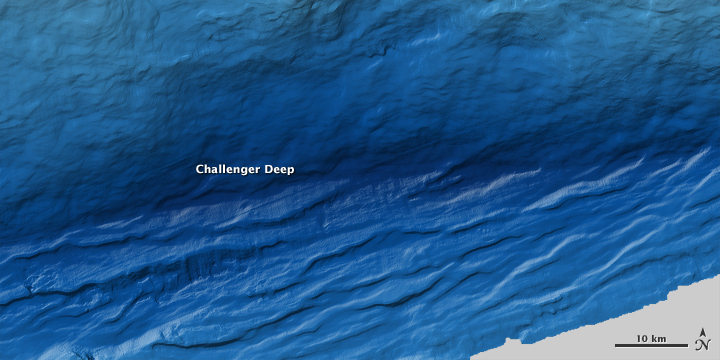
China Sub Set to Dive to Record-Breaking Depths

China has announced that it is ready to send a manned submersible 23,000 feet (7,000 meters) down in the ocean, a trip that would make the country the proud owner of the deepest diving state-owned craft on Earth.
A Chinese ship ferrying the Jiaolong, a deep-sea submersible that can carry three people, arrived at a spot in the Pacific Ocean above the Mariana Trench this morning (June 11). The planned dive toward the Earth's deepest spot is largely symbolic, since the trench plunges far deeper than the Jiaolong's maximum 23,000-foot reach.
Xinhua, China's state-run news agency, has reported this will be the first manned dive to reach 7,000 meters, though in fact, two dives have gone much farther, first in 1960 and then again in March of this year. However, the dive would be the deepest manned dive in China's history and would give the country an unprecedented reach into the ocean depths.
Limited access
Much of the deepest ocean is unreachable via state-owned submersibles; at this point, none has dived deeper than 21,300 feet (6,500 m). Only Japan's Shinkai 6500 has reached such depths. The United States is refurbishing Alvin, its deepest-diving craft, to be able to reach 21,300 feet within the next five years.
China's Jiaolong descended deeper than 16,400 feet (5,000 meters) last July. The upcoming attempt to break that record will take place over the course of six dives between eight and 12 hours long, each reaching farther than the last, according to Chinese news reports.
The attempt to reach 23,000 feet follows on the heels of James Cameron's record-setting dive to the Challenger Deep, the deepest part of the Mariana Trench. The filmmaker and explorer made his descent in a submersible of his own design in late March, reaching a depth of 35,756 feet (10,890 meters), or nearly 7 miles beneath the surface of the sea, in two hours and 36 minutes. [Infographic: James Cameron's Mariana Trench Dive]
Sign up for the Live Science daily newsletter now
Get the world’s most fascinating discoveries delivered straight to your inbox.
It was the first solo dive to the Earth's deepest spot, and came more than five decades after the only other time humans visited the Challenger Deep in 1960, when a U.S. Navy captain and a Swiss engineer spent 20 minutes in the murk at the very bottom of the sea aboard the Trieste submersible.
People vs. robots
Deep-diving robots are routinely used by scientists and the oil and gas industries to explore the ocean's depths, but sending humans to the deep poses far greater challenges.
Despite the difficulties, many scientists say that maintaining the capacity for human deep-sea exploration is important.
"Two human eyes connected to the best portable computer in the world are an extraordinary exploration device," Bruce Robison, a senior scientist at the Monterey Bay Aquarium Research Institute in California, told OurAmazingPlanet in March.
"Some things are better done by a human; other things can be done more efficiently and more effectively robotically," added Robison, a veteran of deep-sea research.
Due to safety concerns, China's manned deep-sea attempt will occur only during daylight and when the seas are relatively calm, according to expedition members. The dive is slated for the coming days if the weather cooperates.
This story was provided by OurAmazingPlanet, a sister site to LiveScience. Reach Andrea Mustain at amustain@techmedianetwork.com. Follow her on Twitter @AndreaMustain. Follow OurAmazingPlanet for the latest in Earth science and exploration news on Twitter @OAPlanet and on Facebook.









